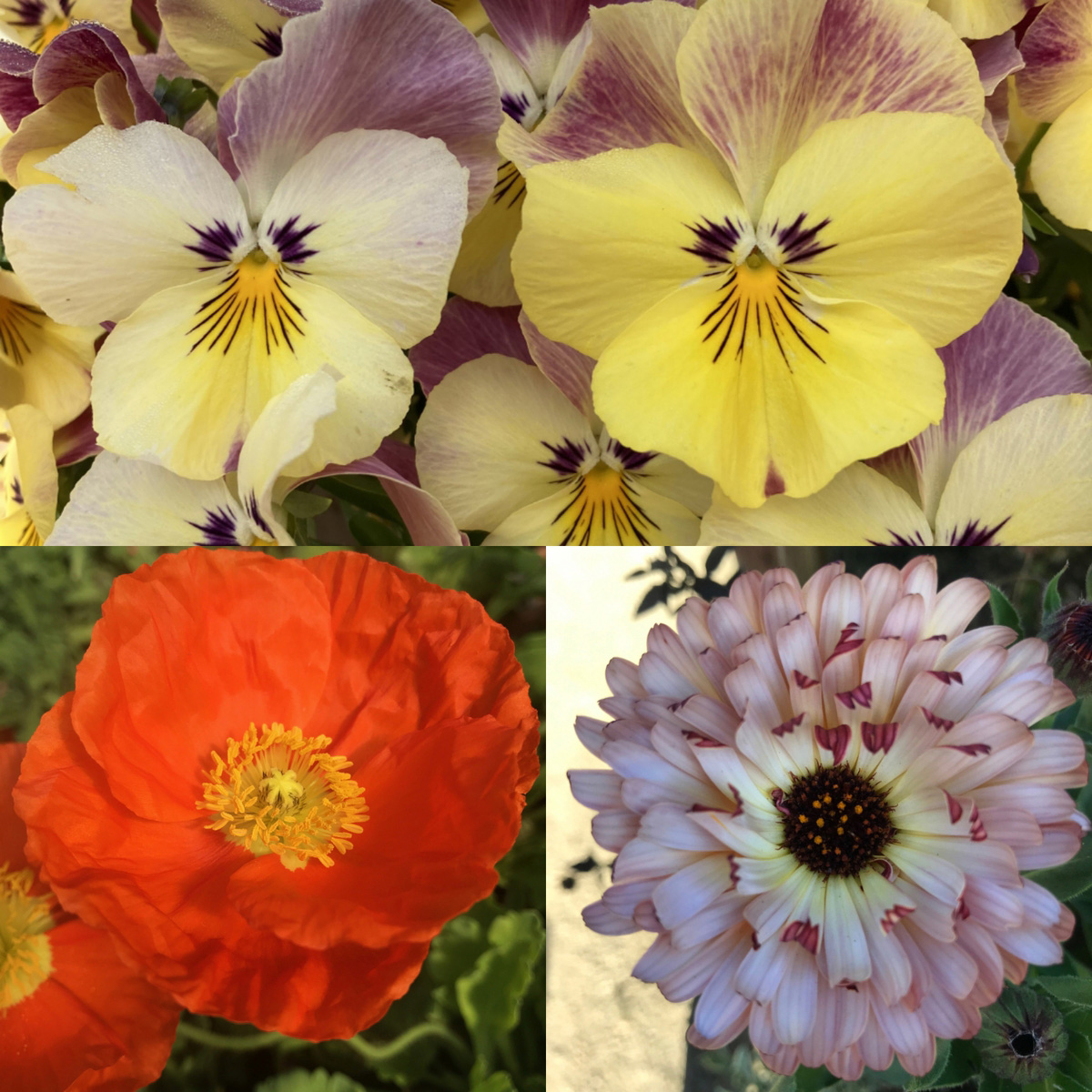One of the best things about gardening in Northern California (and the wider Pacific Northwest) is that there’s seldom any true downtime. With our wonderful weather, we can enjoy our gardens every day of the year with chores to perform, duties to carry out, and flowers to plant. Fall is a particularly magical time—the last heat wave is but a dim memory, sunlight bathes everything in gold tones, and our much-anticipated rainy season has returned.
In my garden, October inspires me to pop a whole slew of cool-season annuals into any gaps in my perennial borders and container gardens. I’ve got my must-have favorites of these easy-to-grow annuals (read further for those), but what I love about these charmers is that they promise nonstop cheerful color as we head into the winter months—and will even continue flowering all the way into spring in milder areas. Don’t worry if your outdoor space might be on the smaller side or your gardening is confined to planters; most fall annuals are perfect for all your container needs.
Tips for Selecting and Growing Fall Annuals Successfully
Before launching into the best cultivars, let’s start with a few practicalities to ensure you get the most out of your annuals this fall. The following is a list of things to consider before buying your first plant.
- Plan on the look you’re aiming for, and ask yourself what you’re expecting from your fall containers. Are you dressing up an informal deck, or a more formal porch? Maybe you’re hoping to bring in a few late-season bouquets? What actual flowers and colors do you want to see adorning your hanging basket, window box, or patio pot? The whole “thriller, spiller, filler” concept works just as well for fall-planted containers as it does for the rest of the year, so have fun playing with a variety of growth habits, textures, and forms.
- Choose appropriate containers for the plants you’ve decided to grow. Make sure there is adequate drainage, and fill each one with fresh, rich potting soil. Add fertilizer specially formulated for bloom promotion, while avoiding those high in nitrogen, which can promote lots of foliage at the expense of flower production.
- To ensure the health and happiness of your fall annuals, make sure you place them in full sun (this is usually their preference). Bear in mind that these plants thrive in cooler weather and fully embrace “normal” afternoon sun in the fall and winter months, but if there is an unseasonal heat wave expected, take measures to either move or provide shade for your containers.
- Hopefully, fall and winter rains will cover all irrigation needs, but if there is a prolonged dry period or a shortfall, water those containers!
- Keep your plants bushy by pinching them back occasionally to promote more buds. Remove yellow leaves and deadhead regularly to encourage new bloom flushes. Monitor for slugs and snails, as these pests thrive in fall. Handpick, or treat with Sluggo if the pest pressure is severe.
- If you prefer to grow your fall color from seed, plan ahead and start your seeds indoors in early August, transplanting them out once autumn arrives. If you didn’t get around to it this year, your local nursery or garden center will be a great source of beautiful, healthy starts for your containers.
Favorite Varieties of Fall Annuals
Violas and Pansies (Viola cornuta and cvs. & Viola × wittrockiana and cvs.)
It is almost impossible to narrow down favorites from the endless varieties of colorful pansies and violas, but the petite and adorable gem ‘Sorbet Coconut Duet’ (V. cornuta ‘Sorbet Coconut Duet’, photo left) is irresistible and a perfect window box addition. The larger-flowered, gently trailing ‘Cool Wave Strawberry Swirl’ (V. × wittrockiana ‘Cool Wave Strawberry Swirl’, photo middle) is fabulous edging any container or spilling out of a hanging basket or window box. Then there’s the dramatic, richly hued ‘Matrix Midnight Glow’ (V. × wittrockiana ‘Matrix Midnight Glow’, photo right) pansy, which adds elegance, grace, and depth to any color combination.
Snapdragons (Antirrhinum majus)
Any of the delightful, colorful, sturdy 18- to 24-inch-tall ‘Sonnet Mix’ snapdragons (photo left) provides vertical interest to your midsized fall containers, whereas the ‘Chantilly’ series (photo right) snaps work wonderfully in something larger. These beauties look just as good in a floral arrangement as they do in a pot.
Pot Marigold (Calendula officinalis)
‘Sunset Buff’ is one of the prettiest pot marigolds, with big, double, delicious blooms in sunset hues of peachy cream, each petal reversed in red (photo left). For a more classic orange (perfect for Halloween), the fabulous ‘Balls Improved Orange’ is a great choice (photo right). Like all pot marigolds, both are edible and outstanding in flower arrangements.
Sweet Peas (Lathyrus odoratus)
In a large container and with at least a 6-foot-tall supporting trellis, obelisk, or tuteur, any of the taller varieties of sweet peas will make a statement. My personal favorite is the fabulous, fragrant ‘Elegance Lavender’ (photo left). For smaller containers or hanging baskets, dainty ‘Little Sweetheart’ sweet peas (photo right) are adorable. For the best results, sweet peas should be planted in fall in our area and will provide leafy excitement all autumn and winter long but won’t start blooming until March.
Icelandic Poppies (Papaver nudicaule)
For a papery, crinkled pop of color held aloft on fuzzy, wiry stems, the astonishingly clear colors of the Champagne Bubbles® series of Iceland poppies are the way to go. ‘Champagne Bubbles Orange’ (pictured) is my absolute favorite, reaching 12 to 18 inches tall and blooming all the way through spring in my area. These make great cut flowers too!
To discuss these plants or ask other gardening questions, chat with the author on the Gardening Answers forum.
To read more on Pacific Northwest gardening, go here.
Photos: Fionuala Campion
—Fionuala Campion is the owner and manager of Cottage Gardens of Petaluma, in Petaluma, California.







